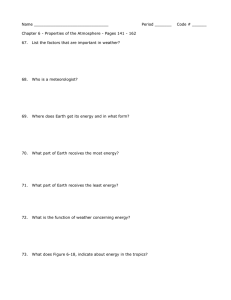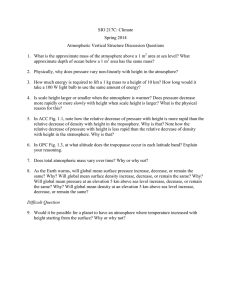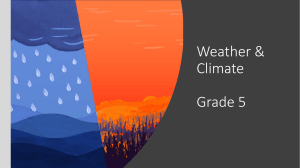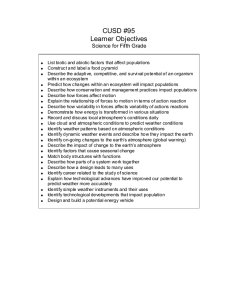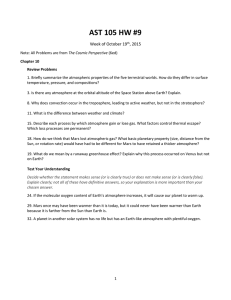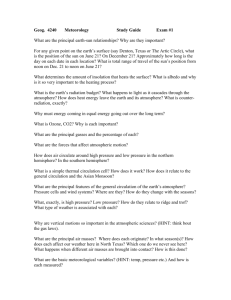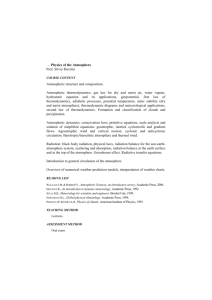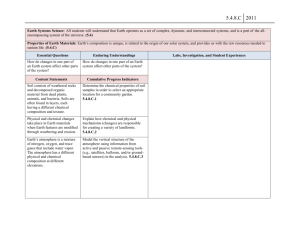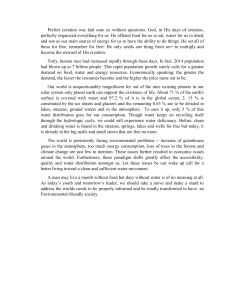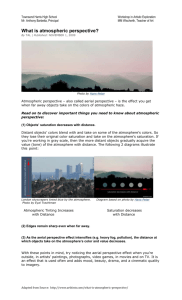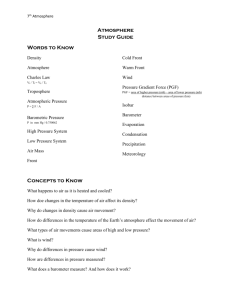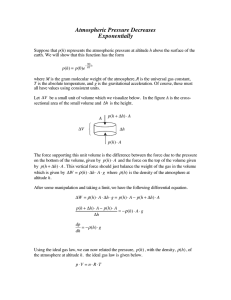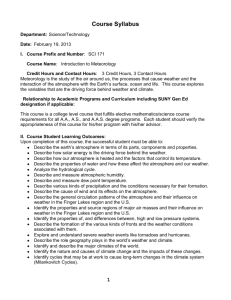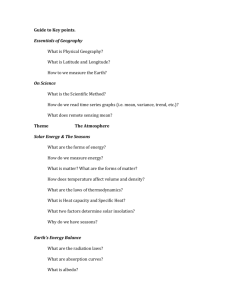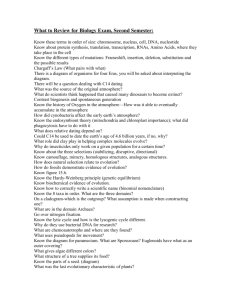F. Climate and Weather
advertisement
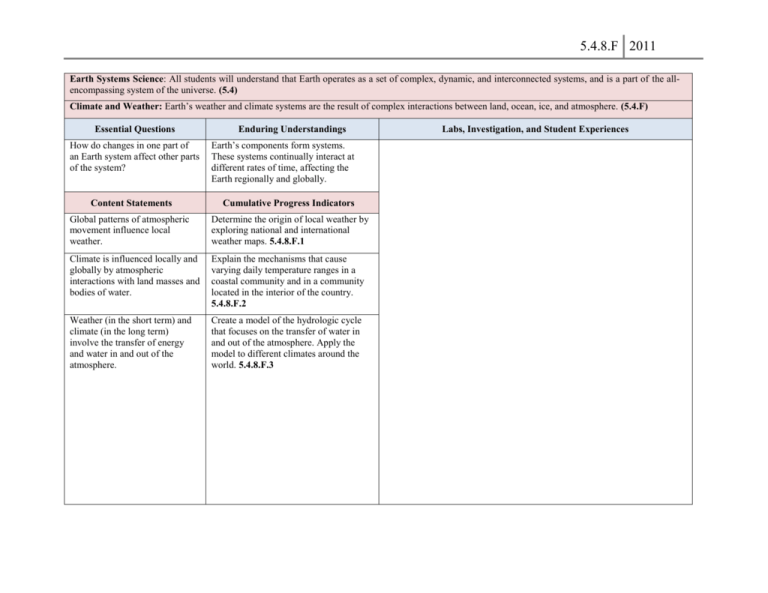
5.4.8.F 2011 Earth Systems Science: All students will understand that Earth operates as a set of complex, dynamic, and interconnected systems, and is a part of the allencompassing system of the universe. (5.4) Climate and Weather: Earth’s weather and climate systems are the result of complex interactions between land, ocean, ice, and atmosphere. (5.4.F) Essential Questions How do changes in one part of an Earth system affect other parts of the system? Enduring Understandings Earth’s components form systems. These systems continually interact at different rates of time, affecting the Earth regionally and globally. Content Statements Cumulative Progress Indicators Global patterns of atmospheric movement influence local weather. Determine the origin of local weather by exploring national and international weather maps. 5.4.8.F.1 Climate is influenced locally and globally by atmospheric interactions with land masses and bodies of water. Explain the mechanisms that cause varying daily temperature ranges in a coastal community and in a community located in the interior of the country. 5.4.8.F.2 Weather (in the short term) and climate (in the long term) involve the transfer of energy and water in and out of the atmosphere. Create a model of the hydrologic cycle that focuses on the transfer of water in and out of the atmosphere. Apply the model to different climates around the world. 5.4.8.F.3 Labs, Investigation, and Student Experiences 5.4.8.F 2011 Desired Results 1. Which zones in the map above are most likely to have a temperate climate (warm summers and cold winters)? A. B. C. D. 1 and 6 2 and 5 3 and 4 1, 2, and 3 (NAEP) 2. Identify and explain the mechanisms that cause patterns in a map of climate regions of the world. 3. Relate the proximity of large bodies of water, and location within global wind belts to the creation of the climate of a region.
